Seattle Solar Electricity Q&A
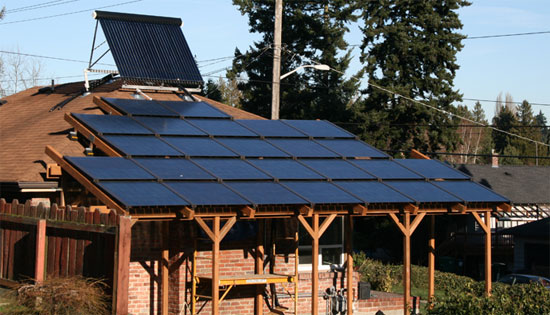
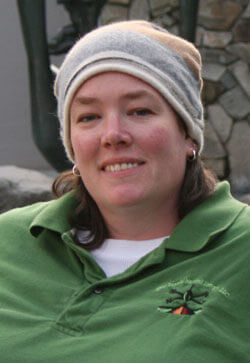
I sat down last week with Amy Beaudoin of West Seattle Natural Energy, a solar & wind energy installer based here in West Seattle. We talked about a bunch of questions that I had as well as questions submitted by readers on topics like:
- Things you can do to improve your home’s efficiency before considering solar power
- Cost-effectiveness of solar
- Average size of residential systems and cost
- Current incentives & rebates for installing solar electricity
- Financing options through loans
- When it makes sense to go for solar and appropriate system size
Listen to Podcast:
Download at iTunes: https://itunes.apple.com/us/podcast/podcast-seattle-homestead/id512293812?mt=2#
Resources Mentioned:
West Seattle Natural Energy:
- West Seattle Natural Energy Website (Also find them on Facebook & Twitter)
- WSNE Project Photo Gallery
- Here is the 5.2 KW solar electric system featured in the top photo of this post.
Washington State Solar Financing Resources:
The first two were mentioned in the podcast, but there are two more from Umpqua and PSCCU below that also offer green loans at decent rates:
- Generations Credit Union (Olympia, WA)
- 1st Security Bank of Washington (Branches throughout Puget Sound area)
- Greenstreet Lending from Umpqua Bank (Throughout Pacific Coast)
- Efficiency Loans from Puget Sound Cooperative Credit Union (Puget Sound area)
Transcript:
Kane: Okay – so I am here with Amy Beaudoin of West Seattle Natural Energy, and you can find their website at WestSeattleNaturalEnergy.com. And today we’re talking about solar electric installations, especially in the Seattle area, but around Washington as well. And so I’ve collected a bunch of questions from people on reddit.com/r/homestead and the Seattle Homestead Facebook page, and we’re just going to go over some questions people have about solar installations and see what Amy has to say. So to start off, could you just give us an idea of how long West Seattle Natural Energy has been around and what type of jobs you guys are doing, that sort of thing?
Amy: We have been in business for a little over four years, and we have just over 30 solar installs to date. So we do mostly residential, a little bit of small commercial, and we do primarily solar PV, but a little bit of solar hot water and small wind in the correct areas.
Kane: Great. Well, before we even get into solar, one of the best questions I saw was, “What type of advice and recommendations do you give clients on reducing their energy usage and consumption prior to figuring out how much solar they need?”
Amy: The biggest thing you can do is check your home for things like insulation – do you have good insulation – is your attic insulated? Is your floor insulated if you have a basement? Is your siding good? Are your windows good? Those are big things that you can do first before you spend a lot of money. Smaller things – you can get better appliances – you know, get rid of the old, outdated ones. There’s a lot of good rebates right now. Change out your light bulbs; CFLs are great or LEDs even – they have great LEDs – a little more expensive, but still really saves on the power bill.
Make sure your doors have weather stripping on them, your windows have weather stripping – little things like that. Don’t leave everything plugged in all the time. Computers have power save. I don’t like to shut my computer down all the time, so I don’t do that. But cell phones – things like that that don’t need to charge overnight – they can charge for like two hours. So those are the biggest things I think you can do. I mean, the city of Seattle has some really good rebates. Snohomish County has good rebates on exterior weatherization and appliances, so – and Puget Sound Energy does as well.
Kane: And if I’m correct, they do subsidized loans for those as well?
Amy: Some of them do – mostly Snohomish County. Seattle doesn’t have a great loan program, but they have a rebate program and free recycle, so that’s nice.
Kane: Okay – great. And I forgot to mention before, but we’re here in a coffee shop, so you’re gonna hear some coffee grinding going on as well. Okay – and so a big concern with a lot of people in Seattle is we’ve got tall pine trees everywhere and a lot of shade. So how often do you go out to a site and maybe not recommend solar specifically for those types of things?
Amy: I would say about – not very often – maybe less than 10 percent. The nice thing about solar is you – if you are willing to be creative, there is generally something you can do. Perhaps we can put it on a garage versus your home roof. Perhaps we can build a porch cover or a patio cover in a sunnier area of your yard. It can be hard, especially in Seattle, because we have small lot sizes, but there’s usually something we can do, and sometimes it’s even as easy, if you’re willing, to do something like maybe limb a little bit – a few trees, because we can tell you exactly, by using our Solar Eye, which branches are gonna impede sunlight.
So if people are willing to – and we’re not gonna tell you to tear down your trees, obviously; that would be counterproductive – but there are some things you can do. And we are a small enough company that we like to be creative with that. Some of our installs that you can see on the website are different; they’re not just standard “slap it on your roof and go away” type deals. There’s some thought involved in it. So we find if people are willing to be creative and thing outside the box, we are, too. And there’s usually something we can do. We have been to places where they have 100-foot pine trees, and – sorry, not much you can do with that.
Kane: Sure, and I bet most of the people in that situation just assume it’s not an option and probably don’t call you out for consultation in the first place.
Amy: Most – most – but one thing to consider is that if – not necessarily here in the city with the lots we have, but if you have a small bit of property out in the county or other areas, there’s objects such as tracking systems, which go on trackers that follow the axis of the sun. Those can be put in a yard so even if your house is in the shade, perhaps you have a vegetable garden. What we like to tell people is if you have enough sun to grow vegetables – and not last year, because last year sucked – but generally, if you have enough sun to grow a vegetable garden – to have that – you have enough sun to have a solar system.
Kane: Okay – and is there a specific time of day that people should be – is afternoon sun, for example, going to be more valuable or midday?
Amy: In the summer, yes. In the summer, you wanna have an area that is unobstructed from about let’s say 9:00 a.m. to 10:00 a.m. until at least 5:00 p.m. to 6:00 p.m. at night. So you need that window, full day sun in the summer is fine. And you have to look at it – don’t look at it ever in the winter because just the way it works – we won’t get as much production in the winter, and that’s fine. But in the summer, if you have 10 to 12 hours of clear – even 8 hours of clear, you’ll do great.
Kane: And so knowing that there’s not going to be as much production in the winter, do you guys optimize the fixed-angle panels specifically for the summer months?
Amy: Yes, it is always, always put up for summer out here.
Kane: And so Seattle and especially Puget Sound area or if Washington state ones, are there any sort of zoning requirements that homeowners should be aware of?
Amy: For standards in the city of Seattle and most of King County, there is no permitting as far as putting it on your roof. You have to get an electrical permit, obviously, but there’s no building permit. The only time we have to get building permits is if we’re doing a tracker, because with the poured foundation, or a nonstandard install like a patio cover or something to that effect. But no, there’s no zoning regulations. There’s no permitting issues.
And one interesting thing to consider is that Washington state two years ago passed a law saying that if you lived in an HOA that they could not ban you from solar panels. That is a law, and we can certainly give you the law of findings. So we just installed our very first system in an HOA. All it really involved was an extra meeting with the Homeowners Association to just talk to them and answer questions. But for years people have not – that’s been a big problem, so now you have that right.
Kane: That’s great. And even with that rule in place, did you have any pushback, or were they pretty okay with it – just had some questions?
Amy: No, what they really wanted to know is, “What is it gonna look like?” And in this particular install, it was on a three-story house. You can’t hardly see the roof. I mean, I could barely get pictures of it from the road. So, yeah, not a big deal.
Kane: Great. Okay – and so a lot of people reading Seattle Homestead are gonna be interested in doing whatever they can to go 100 percent renewable on their energy. And so for a small and relatively energy-conservative household, is that pretty easily done? Do you see a lot of homes that are getting 80 or 100 percent of their electrical needs, or is it more supplemental?
Amy: It’s supplemental, but the way that the metering credits and the state rebates work, for now at least, that you only have to put in a system that provides about 40 to 45 percent of what your home uses on a daily basis to have no power bill. So even if you’re not being 100 percent solar or whatever you’re choosing, that doesn’t mean you’re not – you can still reduce your power bill significantly and have no power bill.
Kane: And that’s because of the financial payback aspect of it.
Amy: Yes – yeah – and then that metering – which means you are gonna lower your power bill because the power company will credit you for everything you produce, whether you use it or didn’t use it, and then the state also reimburses you once a year for everything you produce. So in the long run, you don’t have to do 100 percent systems. 100 percent systems, you would have to have an insanely large house, a lot of roof space, and financially it would be – you could do it, but we recommend people stay on the grid as much as possible because then they pay you for it. If they’re gonna offer you money, I say, “Take it.”
Kane: Okay. And so with the net metering – just to be really clear – so if you produce 120 percent of what you use during the day, you’re getting paid back for 120 percent or the 20 percent?
Amy: You will get credited for 120 percent. Basically, the way it works when you get your bill it will have two line items. It will say, “This billing cycle you used X kilowatt hours. This billing cycle, you produced X kilowatt hours. You owe us either the difference, or you have a credit on your bill.”
Kane: Okay – so not only are you not paying the $0.065 per kilowatt hour, but you’re getting the rebate on top of that?
Amy: Indeed – yeah.
Kane: Great. Okay – well, that is good to know. So continuing in that vein, what’s the average size residential system you install, and are you targeting that 40 or 50 percent coverage? Are there people that are trying to go higher than that?
Amy: We – when we do our site surveys and do our bids, we like to give people three sizes of system: a minimum size, which to get the 30 percent tax credit you have to have one kilowatt, so we generally start in the one-range, we give you a midsize system, which is gonna be the breakeven, no power bill system, and then we give you a large system, which would be how many panels can we physically put on your structure. So there is a limit as far as size goes.
Kane: And does it seem like most people opt for the middle?
Amy: Most – some usually find something that works within their budget that gets pretty close to the middle, if at all possible, and then some choose to do smaller installs but then add to it, or – we have very few people that have wanted – that have just gone over for the sheer – because they can factor. A couple – and that’s great – you know. So they have no power bill and then some. But, you know, the state rebate does have a cap on it. It’s $5,000.00, which is a lot of money, but still – so there isn’t financially a huge purpose in putting a huge, huge, huge more-than-you-need system. For out here, the average – average is kind of hard – but average out here is about three to four kilowatts.
Kane: Okay – to cover total use during the year or to break even?
Amy: For the breakeven – for the no power bill.
Kane: Okay – and so earlier you were saying that the average cost per kilowatt is $6,000.00 or $7,000.00 right now?
Amy: It’s right now between about $5,500.00 and $8,000.00 depending on the product that you buy.
Kane: Okay – and the $5,500.00 would be the most affordable panels and stuff.
Amy: Yes – but they’re all U.S. made. We actually use the SolarWorld panels out of Beaverton.
Kane: What was the name again?
Amy: SolarWorld.
Kane: World – okay.
Amy: Mm-hmm – they’re out of Beaverton, and that kind of goes along with the sustainability aspect because we’d rather purchase local. You know, I mean, we’d never, ever use foreign panels, ever. So everything is at least made here, so our standard panel system is Enphase microinverters, which is one inverter per panel, and SolarWorld panels.
Kane: Okay – and so those panels that you’re installing, how many kilowatts does each panel – are you installing, you know, 1.65-kilowatt systems, or is it every half-kilowatt?
Amy: You get – the SolarWorld panels are 240 watts per panel, so you need 4 of them basically to have 1 kilowatt. So our kilowatt systems end up being a weird percentage, because if you put in eight panels or – you know, whatever.
Kane: 0.96, I think… And is that still okay for that minimum one-kilowatt size?
Amy: Yeah, as long as it is at least one kilowatt, so we usually try to install five panels just –
Kane: 1.2 or whatever.
Amy: — to be better – yeah.
Kane: Great. Okay – and so if you’re talking about roughly $6,000.00 per kilowatt, then the panels – per panel can be broken down to about $1,500.00 roughly, after minimum system size, anyway?
Amy: Kind of – I mean, you have the panels, and you have the inverter, but you also have the balances of systems, which is the racking and the wiring and the labor. So – kind of – yeah.
Kane: All right – rough calculation. Okay – so I guess a lot of the questions we had were focused on return on investment and cost efficiency. So let’s talk about the incentives and rebates first, since that’s what most of the calculations are kind of centered around. What are the current rebates and incentives, federal and state, and then what does the timeline right now – as of early 2012, what does the timeline look like for those phasing out?
Amy: The federal tax credit is a 30 percent tax credit, and it is a credit, not an income reduction. It’s 30 percent of the entire cost of the system. So whatever you would write a check for, you get 30 percent of that. It’s an easy form to fill out for your taxes. So that’s the only federal incentive we have right now. It is good through 2016, although I can’t imagine we wouldn’t renew it – but you never know. The state incentive is good through 2020, and there are three levels. The first level is $0.15 per kilowatt you get paid, and that is for standard panels –
Kane: And installation.
Amy: — and installation. The second is $0.36 per kilowatt, and that is if you use a Washington-made panel, but a non-Washington inverter. So for instance, say an i.Tech panel with an Enphase inverter. The third system is $0.54 per kilowatt, and that is for all made in Washington systems. We have two versions here. We have Silicon Energy in Marysville; they have a panel and inverter system. And then i.Tech which is in Bellingham; they have a panel and inverter system as well.
Kane: Okay – so then the natural follow-up question is how does the cost for the Washington-made modules and inverters compare to the other U.S.-made ones, and are they pretty comparable in terms of lifespan and output?
Amy: The panels are all the same, for the most part. The Silicon Energy is a little different, but as far as efficiency ratings and how they work and how they perform, they’re all the same. They’re very good panels. They’re well made. They have very good warranties on them. No one can say for sure the lifespan of a solar panel, but they’ve all been tested.
Kane: Sure – just estimated to be the same.
Amy: Yeah – well, they’ve all been tested in labs up to – environmental chambers for 60 years. So there you go. The warranty is 20 years, at least.
Kane: And the warranty, does that cover 75 percent output or something like that?
Amy: It’s power production, so they’re warrantied to work at at least 80 percent of their rated value for 20 years.
Kane: And how is that tested?
Amy: They put them in environmental chambers. I don’t – haven’t seen the exact –
Kane: Yeah – and we gotta wait a few years to see anyone claiming on that, I guess.
Amy: Yeah – well, and they also – to get their UL rating, which have to have in the United States, they have to withstand a Midwest hailstorm, so they take ice balls, and they put them in those baseball shooter things and shoot ice balls at them, and if they break they don’t pass.
Kane: Wow! Okay.
Amy: So they’re very, very, very durable.
Kane: Okay – so they can handle Seattle mist.
Amy: Yes, they’re good with the mist. You drop a tree on it, you’ll probably break it, but it is permanently affixed to your home, so generally your homeowners insurance would cover that anyways.
Kane: Okay – great news.
Amy: But as far as the difference between pricing, a standard panel system is, like we said, about $5,500.00 to $6,000.00 per installed kilowatt. The i.Tech and Silicon Energy systems are about the same cost, so we’ll use the same number for them; they’re in the about $8,000.00 – maybe $7,500.00-a-kilowatt range.
Kane: Okay – and so you’re looking at maybe 20 – 30 or 40 percent more?
Amy: It’s about 30 roughly – 30 to 35 percent more depending.
Kane: Okay, so obviously some of that is covered by the 30 percent federal tax credit, but when would it make sense – what size and system, for example, would it make sense to go with the Washington-made one versus the U.S.-made one? And is there a time factor in that?
Amy: The – you have roughly seven years – well, seven and a half years –
Kane: For the Washington credits?
Amy: — for the Washington credits. A Washington system takes roughly seven years to pay off, so if you are in the market for –
Kane: So 2012 is the year.
Amy: Yes – well, yeah, and it runs out in 2020 – well, I guess you have, yeah, seven and a half years from now. So if you’re going to do a Washington system, and you want the lower ROI, then you have to do it within the next – I’m gonna say 18 months to be a little – to beat the –
Kane: To get the best benefit.
Amy: Yes. Then after that point, we really are gonna have to see what the legislature does, but between – in the next two to three years, unless Silicon Energy and i.Tech lower their prices, it will make no point to do it because you’re not gonna have that much time to recoup your loss. So if you’re doing a huge system, all the systems are really good. It’s a personal financial goal, really. If you’re considering it, what you wanna look at is, “Do I have one amount of money?”
Let’s say I can only spend $25,000.00. That’s all I – I got a loan for it; that’s what I have. We can get you more solar and more production if we do standard panel systems with microinverters than we can with a Washington system. So if you – if what you’re trying to do is just do something with the funds you have available, we would recommend that. If you’re really in it because let’s say you’re retiring in less than ten years and you wanna have that portion of your fixed income taken care of – the electrical side of it – then a Washington system is a great way to go, because by the time you’re retired you’ll have it paid – basically, it’ll pay itself off, and you’ll know certainly by then what your average power bill is gonna be, if you even have one.
So those are the two big differences. Most people it comes down to which panel do I like the looks of? Do I like the microinverter versus the monolithic inverter?
Kane: Okay – so it’s really centered around what you can afford to put out right up front and what sort of financing you’re using and your goals?
Amy: Yes.
Kane: Okay. Well, that’s – I think that’s really helpful to a lot of people that are seriously considering it. So going along with financing, I’ve heard that within the last year or two there are some banks that are now offering solar financing. What’s the current situation for that sort of thing?
Amy: There’s two banks – they’re actually credit unions that I know of that do specifically green loans. Their rates depend on your credit score. They’re generally in the 7 to 8-ish range, which isn’t horrible.
Kane: It’s comparable to a normal HELOC loan.
Amy: Basically – yeah – but because you’re doing a solar system, they might give it to you more readily than, say, you know, if you walked into Chase or something like that.
Kane: And do you know the names of those two banks? Oh, okay, got it in the West Seattle Natural Energy literature guide here.
Amy: First Security Bank of Washington, which they are located – they have a branch in Lynwood, I believe, and then Generations Credit Union, and they are in – they’re down south like Des Moines or something to that effect.
Editor’s Note – there are two additional banks – Umpqua Bank and Puget Sound Cooperative Credit Union – and all 4 banks can be found in the resources at the top of the page.
Kane: Okay – great – and we’ll have those on the website as well. So – okay – that’s good to know. All right – well, so we’ve talked about the production credit, and the panels, and so the expected payback and breakeven, it sounds like roughly 7 or 8 years for the state-made panels, relying on that payback incentive, and you said 10 or 11 years for the other U.S.-made panels?
Amy: Yeah – and one thing if people are considering it seriously is to consider the fact that electric rates are on the rise, and those quoted figures are for today’s power rate. Right now, in western Washington, we pay basically between $0.094 and $0.098 per kilowatt, so just under $0.10 per kilowatt. What a lot of people don’t know is the reason we have cheap power is because of the Bonneville Act, and that was a federal law that was put into effect over 100 years ago. The 100 years was up last year.
They decided to not renew that, so every single power company – all of them – is going to have to get us, their clients, up to a retail rate, because that is not what we’re paying right now. So power rates have already gone up. It’s not by a lot. It’s by fractions of pennies, but between now and the next three years we have to be where kind of the average is for our area. The average – our closest neighbor that buys power from Bonneville is Portland. So Portland pays right now roughly about $0.18 per kilowatt, so almost double what we pay.
So one thing to really consider is if you wanna do it, and you can afford to do it sooner rather than later, you do it now before your bill – because a lot of people say, “Well, my bill is only $100.00 every other month.” Okay, that’s fine, but that’s today. So that’s something to definitely keep in mind, too.
Kane: Okay – and so among the solar community, are you expecting parts and things to go up in price as you see an increase in rates? Is that kind of an expected thing for manufacturers?
Amy: Yes, it’s come down a lot because after the last election everyone got on the green bandwagon and manufacturers assumed everyone was gonna do it, so they overproduced panels and other things like that. So we saw a decrease in price – significant decrease in price in the last two years. It’s starting to go up a tiny bit, and a lot of that has to do with the economy. As people have more money, they’re gonna charge us more for our goods.
Kane: Sure.
Amy: Oh, one other thing to point out – I forgot – is that right now if you buy a solar system, you do not pay Washington state sales tax on it, and that is going away in June or 2013, so you’ll save 10 percent right there if you do it before next summer.
Kane: Okay – well, that’s very good to know. Okay – so June 2013 – all right, so that’s about the year and a couple months’ mark. Okay – great. Well, I think that is all the big questions I had, and that definitely answers a lot of my own questions and some of the ones that readers had. So will you be available if you have some follow-up questions? I can email those over to you.
Amy: Yes – we have – our website has a contact form on it, so if you have other questions you can certain fill out the form, and we’d be happy to get back to you. Our website is WestSeattleNaturalEnergy.com, or you can certainly email me questions. The email is info@WestSeattleNaturalEnergy.com.
Kane: Great. And so just to be clear, what’s your area that you guys do installations in?
Amy: All of western Washington.
Kane: Okay – great. Okay – so pretty wide area there. And all right – well, I think that’s everything I had. So we’ll go ahead and take some follow-up questions. And yeah, thank you very much, Amy, for taking the time to answer all my questions. And I hope we can do another one in the future just about solar hot water and maybe wind in the area as well.
Leave your questions in the Facebook comments section below and Amy and the crew at WSNE will get back to you!

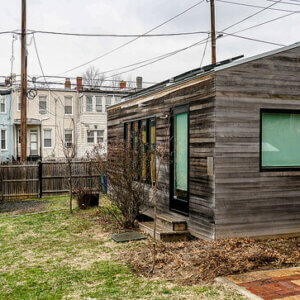

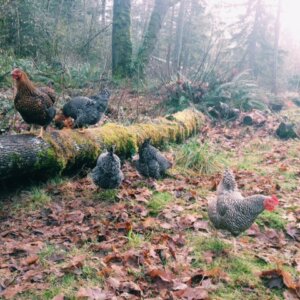


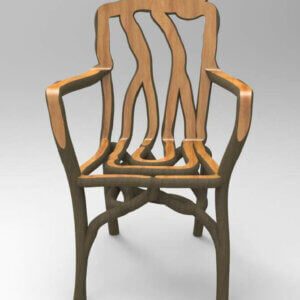




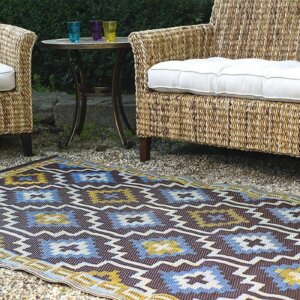
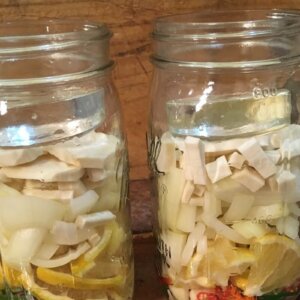

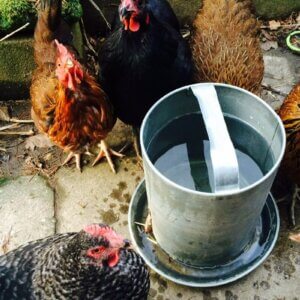
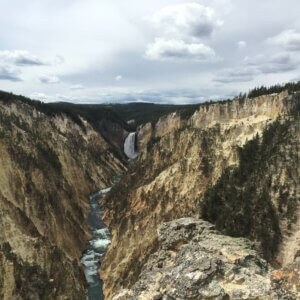

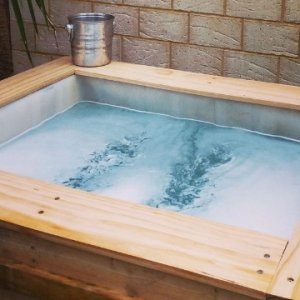



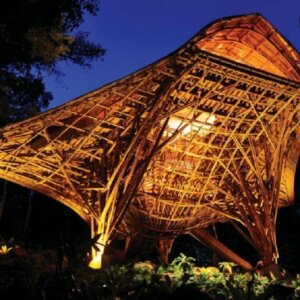

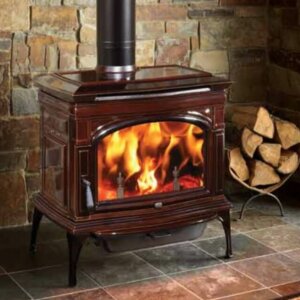






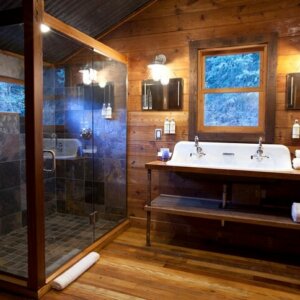



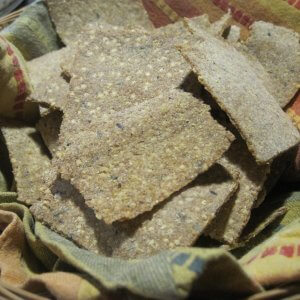

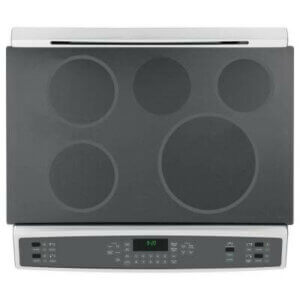
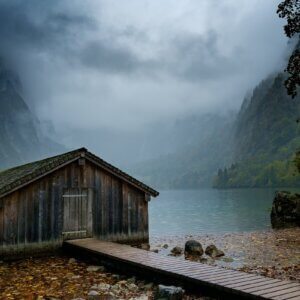



Leave a Reply